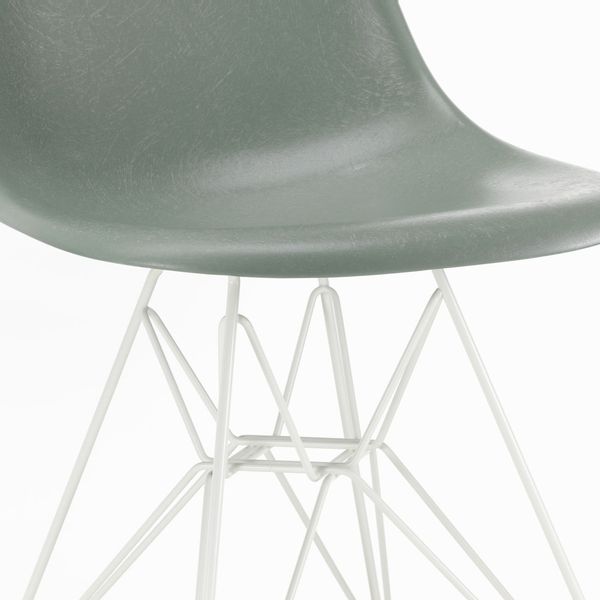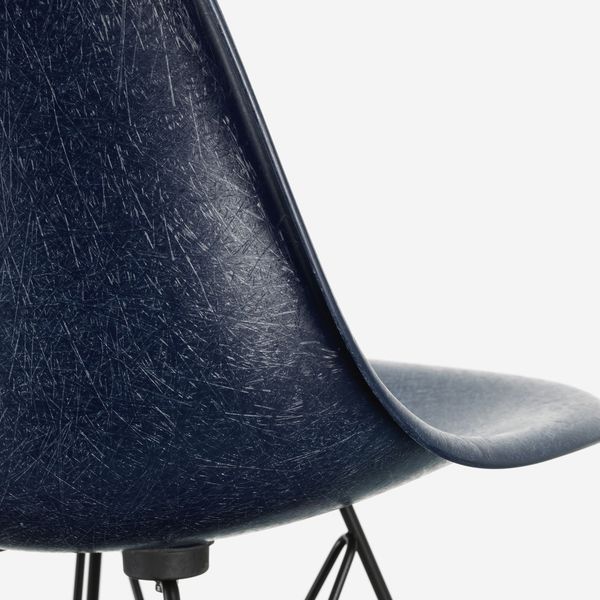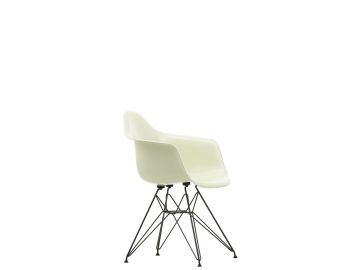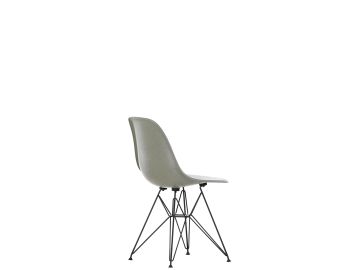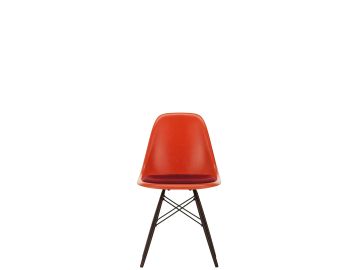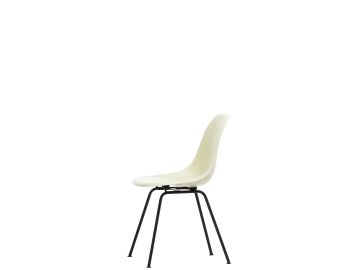Eames Fiberglass Chairs
Charles & Ray Eames, 1950

In 1948, Charles and Ray Eames participated in the 'International Competition for Low-Cost Furniture Design' organised by the New York Museum of Modern Art, entering a chair with a seat shell moulded to fit the contours of the human body along with a concept for a variety of bases. Their design won second prize. However, the metal shell proved too complex and expensive to achieve successful mass production.
The couple's search for alternative materials eventually led them to glass-fibre reinforced polyester resin, which until then had been primarily restricted to military applications such as aircraft radomes and cockpit covers. The Eameses recognised and fully exploited the advantages of fibreglass: mouldability, rigidity and suitability for industrial manufacturing methods. With this material, which was previously unknown in the furniture industry, they successfully developed the moulded seat shells for mass production: the Fiberglass Chair was born. Its organically shaped, one-piece shell proved to be a much-admired innovation at a time when chairs typically consisted of a seat and backrest. Fibreglass offered the added advantage of pleasant tactile qualities and a perfectly moulded form for optimal comfort.
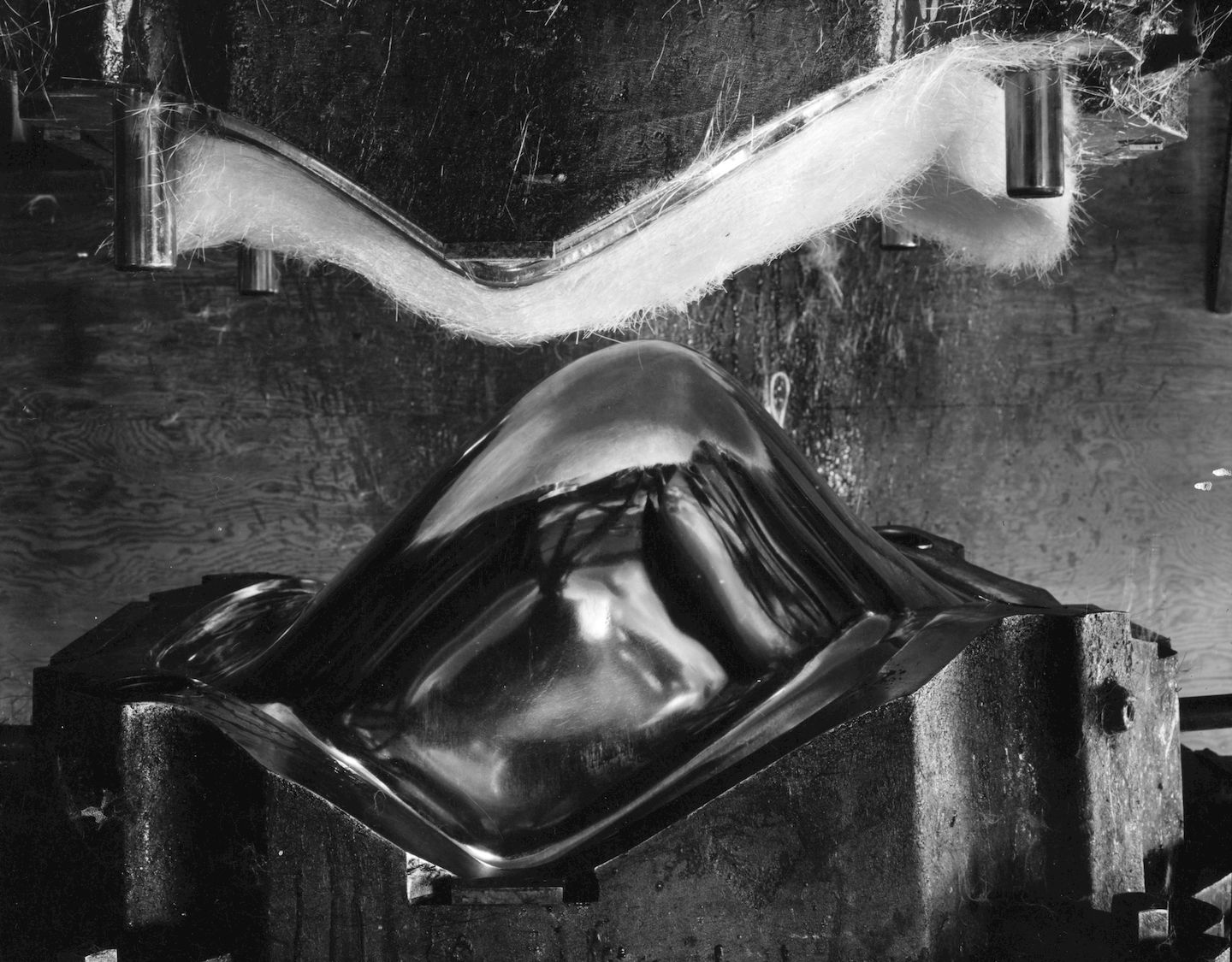

Charles and Ray developed a striking series of individual bases that could be freely combined with these shells – such as the Eiffel Tower version made of welded steel wire or the wooden base reinforced with metal struts. This combination of revolutionary seat shells and innovative bases gave the chair family the iconic traits that are still instantly recognisable today.
Charles and Ray attached great importance to the use of colours – as fibreglass had previously only existed in a colourless version. They consequently spent many days in the factory, mixing hues for countless prototypes in their efforts to create colours that best accentuated the organic shape of both shell forms – with and without armrests – in a range of coordinated shades. The first colours developed by the Eameses were greige (a mix of grey and beige), elephant hide grey (to which Charles was referring when he said 'What I really want is a black with feeling') and the slightly transparent tone parchment. Sea foam green, navy blue, yellow, dark and light ochre, and also red followed shortly after in the very early days of production.


The Fiberglass Chairs were launched on the market in 1950, introducing a new furniture typology that has since become widespread: the multifunctional chair whose shell can be combined with a variety of bases to serve different purposes. In response to the enormous popularity of the chair, the choice of bases and colours was subsequently expanded. Over the course of the following decade, the Fiberglass Chairs became one of the best known furniture designs of the twentieth century.


Vitra manufactures the Fiberglass Side Chairs and Fiberglass Armchairs by Charles and Ray Eames in some of the early original colours. The fibreglass shells are characterised by their lively visual appeal, which is much-prized today. Fibreglass owes its charm to an irregular surface, which appears almost like a natural material thanks to its clearly visible fibres. The versions with a polypropylene shell – the Eames Plastic Chairs– also remain available. Together the two chair groups form an extensive family, enabling countless variations of the classic Eames design, with a suitable version for almost every taste and purpose.
Information
Colours and materials
CAD data
Product and safety information
Dimensions
Colours and materials
CAD data
Product and safety information
Dimensions
This product was designed by
Charles & Ray Eames



Charles and Ray Eames are counted among the most important figures of twentieth-century design. Their work spans the fields of furniture design, filmmaking, photography and exhibition design. Vitra is the sole authorised manufacturer of Eames products for Europe and the Middle East. When you own an Eames product made by Vitra, you know it is an original.




